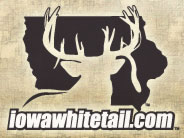blake
Life Member
From the Iowa DNR website:

Iowa Furbearer Season Begins November 2
Iowa fur harvesters will find good numbers of raccoons, coyotes, bobcats, river otters, mink, and, with all likelihood, other trappers in the countryside when the furbearer trapping and hunting season opens on Nov. 2.
“Population-wise, all species are doing quite well except for muskrats and gray fox,” said Vince Evelsizer, furbearer biologist for the Iowa Department of Natural Resources. “Trappers who typically pursue muskrats could do well this year if they switch to coyotes and raccoons, and to some extent mink or red fox.”
Muskrats are a bread-and-butter species for Iowa trappers, but the population took a significant hit last year after the drought left many Iowa wetlands dry heading in to winter. This year, wetlands are in better shape but the muskrats are not there.
“It will take a few years for the population to come back,” Evelsizer said.
What has come back and in a big way is the number of fur harvesters.
The number of fur harvesters varies with the fur market and as the fur market outlook continues to be very good, more fur harvesters will participate.
“We’ve gained about 2,000 trappers per year each of the past three years,” said Evelsizer and expects the increase in trappers to continue, surpassing 19,000 last year.
“There will definitely be more competition out there,” he said.
Regulation Changes
The Iowa Department of Natural Resources removed the harvest quotas for bobcat and river otters, along with the 24-hour reporting requirement. The bag limit for river otters was reduced from 3 to 2 to prevent too many from begin taken in any one area. The bag limit for bobcats remains the same as last year – 1 per fur harvester.
The list of open areas for bobcat harvest increased by six counties adding Audubon, Crawford, Dallas, Iowa, Muscatine and Poweshiek counties. A map of the counties open to bobcat harvest is on p. 21 in the Iowa Hunting and Trapping Regulations book available at license vendors and on the Iowa DNR’s website at www.iowadnr.gov/huntingregs
Starting this year, the DNR will collect the complete lower jaw or intact skull of bobcats and river otters for population monitoring purposes, rather than the whole carcass. Whole carcasses with the pelt on will be collected for incidental or road kill otter or bobcats.
Gray Fox Study

Iowa is participating in a Midwest gray fox DNA tissue study by collecting tissue samples from trappers for genetic information.
“Iowa’s gray fox numbers have declined over the past 5 to 10 years and hit rock bottom in the last few. There are small pockets of gray fox throughout the state, but not real high numbers. Southeast Iowa has the highest population,” Evelsizer said.
Trappers who catch a gray fox can contact Evelsizer at 641-357-3517.

Iowa Furbearer Season Begins November 2
Iowa fur harvesters will find good numbers of raccoons, coyotes, bobcats, river otters, mink, and, with all likelihood, other trappers in the countryside when the furbearer trapping and hunting season opens on Nov. 2.
“Population-wise, all species are doing quite well except for muskrats and gray fox,” said Vince Evelsizer, furbearer biologist for the Iowa Department of Natural Resources. “Trappers who typically pursue muskrats could do well this year if they switch to coyotes and raccoons, and to some extent mink or red fox.”
Muskrats are a bread-and-butter species for Iowa trappers, but the population took a significant hit last year after the drought left many Iowa wetlands dry heading in to winter. This year, wetlands are in better shape but the muskrats are not there.
“It will take a few years for the population to come back,” Evelsizer said.
What has come back and in a big way is the number of fur harvesters.
The number of fur harvesters varies with the fur market and as the fur market outlook continues to be very good, more fur harvesters will participate.
“We’ve gained about 2,000 trappers per year each of the past three years,” said Evelsizer and expects the increase in trappers to continue, surpassing 19,000 last year.
“There will definitely be more competition out there,” he said.
Regulation Changes
The Iowa Department of Natural Resources removed the harvest quotas for bobcat and river otters, along with the 24-hour reporting requirement. The bag limit for river otters was reduced from 3 to 2 to prevent too many from begin taken in any one area. The bag limit for bobcats remains the same as last year – 1 per fur harvester.
The list of open areas for bobcat harvest increased by six counties adding Audubon, Crawford, Dallas, Iowa, Muscatine and Poweshiek counties. A map of the counties open to bobcat harvest is on p. 21 in the Iowa Hunting and Trapping Regulations book available at license vendors and on the Iowa DNR’s website at www.iowadnr.gov/huntingregs
Starting this year, the DNR will collect the complete lower jaw or intact skull of bobcats and river otters for population monitoring purposes, rather than the whole carcass. Whole carcasses with the pelt on will be collected for incidental or road kill otter or bobcats.
Gray Fox Study

Iowa is participating in a Midwest gray fox DNA tissue study by collecting tissue samples from trappers for genetic information.
“Iowa’s gray fox numbers have declined over the past 5 to 10 years and hit rock bottom in the last few. There are small pockets of gray fox throughout the state, but not real high numbers. Southeast Iowa has the highest population,” Evelsizer said.
Trappers who catch a gray fox can contact Evelsizer at 641-357-3517.


